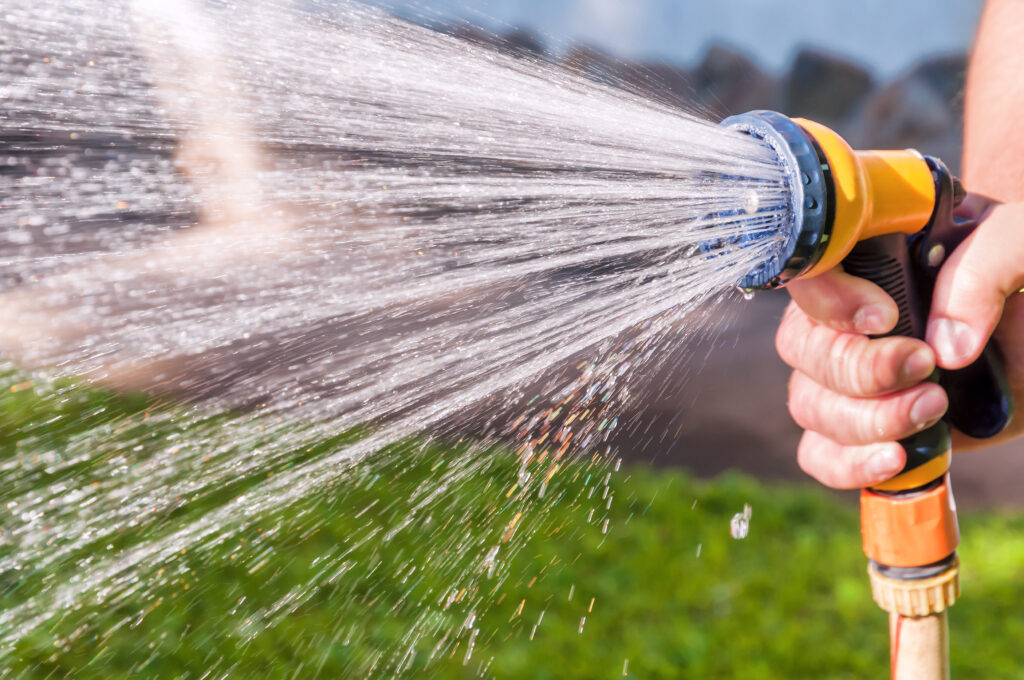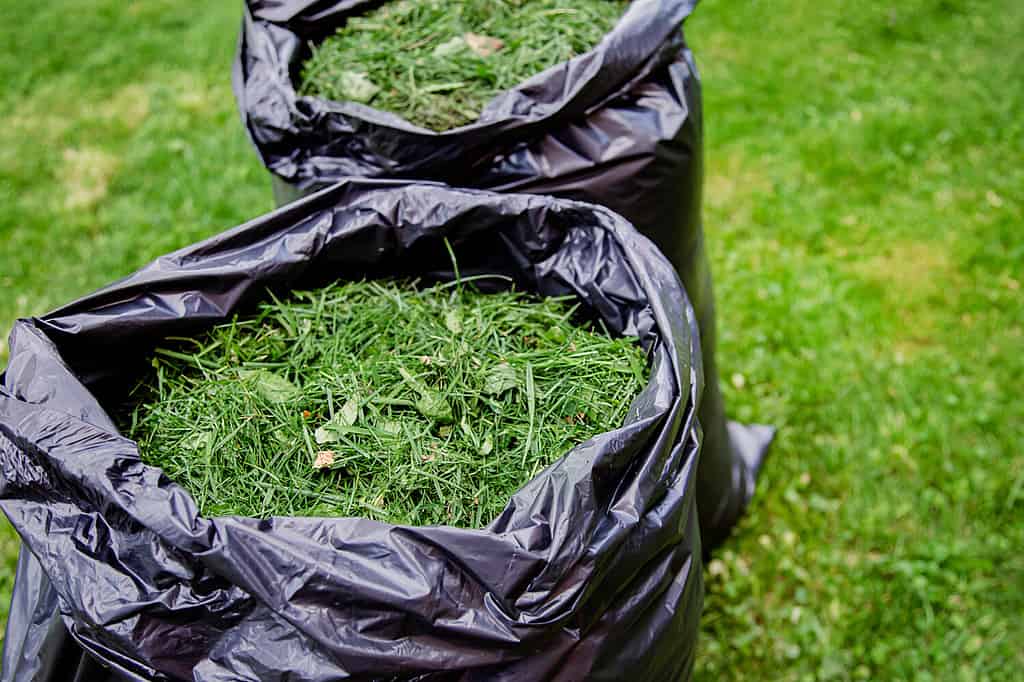The key to a green, healthy lawn is water. If you don’t water your sod enough, it will dry out and eventually die. If you water it too much, you risk waterlogging the roots and causing fungal infections. So, how often do you water new sod?
Getting the water just right is essential. In this article, we’ll look at exactly how much water your sod needs, as well as a few other tips to keep your sod healthy.
How Often Do You Water New Sod?

New sod watering requirements vary based on the sod type, your location, the soil, and your grass.
©iStock.com/vovashevchuk
There isn’t a one-size-fits-all answer to watering sod. It depends on the weather in your area, your soil, and the specific type of grass you have. However, here are some general guidelines you can follow.
When you first install the sod, you should water it immediately. Apply enough water to thoroughly wet the soil beneath the sod, as this helps the sod grow into the soil underneath.
For the first two weeks, the sod will be extra-sensitive. You need to keep it consistently moist, which generally means watering daily or multiple times daily. Hot and dry weather may call for more watering.
After the sod has established roots, you can reduce the watering frequency. Move watering to every 2-3 days, allowing the top of the soil to dry between waterings. This prevents the roots from growing too shallow, which can make the grass sensitive to drought.
After about 4-6 weeks, the sod should be well-established, and you can transition to a more typical lawn watering schedule. Water deeply but infrequently, allowing the soil to dry out between waterings.
Generally, sod may need watered 1-2 times a week, though this depends on the local climate conditions.
11 Sod Care Tips for a Lush, Green Lawn

Caring for your lawn requires
severalsteps, such as fertilization and aeration.
©EsfilPla/Shutterstock.com
1. Mowing
Once the sod is established and has grown to about three inches, you should start mowing it. You don’t want to cut more than one-third of the height of the grass at a time. You can only cut an inch off if your grass is three inches.
Mow regularly to prevent the grass from getting too tall and encourage it to grow denser. Mowing can also discourage weeds, as many cannot withstand frequent mowing.
2. Fertilize
Fertilize about 4 – 6 weeks after installation. Use a balanced fertilizer and follow the manufacturer’s recommendations for application. Stay on a regular fertilizing schedule to keep the grass well-fed.
Without fertilizer, your yard can become deficient in key nutrients.
3. Aeration
Aerating the soil helps improve its compaction, allowing the roots to access more air, water, and nutrients. Soil that is too compacted can quickly kill your grass.
How much you should aerate depends on your soil type. Soil that is naturally more compacted may need aerated twice a year, while most soil types only need to be aerated once.
4. Weed Control
Weeds can outcompete most grasses relatively quickly, so it is important to watch for them and address them quickly. Regular mowing can help suppress weed growth, but you may also need to apply herbicides.
Herbicides should only be used as a last resort, though. They can harm the environment and are expensive to use regularly.
5. Pest and Disease Management
Most grass should remain healthy. However, pests and diseases are bound to pop up occasionally. You should keep an eye out for pests and diseases so that you can treat them promptly when necessary.
The best way to handle diseases is to avoid them, though. Keeping your grass healthy can prevent potential problems like pests from taking advantage of them.
6. Sunlight
Sunlight plays a crucial role in your sod’s health, too. Different grass varieties have different sunlight requirements. You’ll need to look at the requirements of your particular sod species and act accordingly. It’s best to choose a sod that will work well in your area – instead of trying to adjust your area for your sod.
7. Soil Testing
You should regularly check your soil for pH and nutrient levels. This test helps you choose the exact fertilizer your sod needs to thrive, allowing you to make more pointed adjustments.
Soil testing is relatively inexpensive, but you should plan for it. Therefore, we highly recommend marking your calendar for soil testing each year.
8. Avoid Heavy Traffic
Preventing everyone from walking on your grass altogether can be impractical. However, you should try to protect your grass from heavy foot traffic with paths and using pavers. Heavy traffic can quickly kill spots in your yard.
Sod is even more prone to weakness due to foot traffic. Moreover, the young roots are more prone to damage due to traffic.
9. Seasonal Care
You’ll need to adjust your maintenance to meet the changing seasons. For instance, you’ll have to increase watering during the summer months. In the cooler seasons, you may need to mow less.
Fertilizing and seeding should all occur at the right moment. If you do things during the wrong season, your lawn may have a harder time thriving.
10. Fall Maintenance
Fall is a time that requires some special maintenance. You’ll need to apply the correct fertilizer to promote winter hardiness. Your goal during fall is to prepare your grass for fall.
You should also remove leaf litter from your yard. Too many leaves can overwinter diseases and pests. Plus, the shaded area over the grass can cause it to die.
11. Overseeding
Your lawn will develop bare or thin patches over time. It’s important to seed these areas again to ensure that the grass continues to grow. Overseeding should be done regularly to encourage thicker grass growth and fill gaps.
Seeding sod isn’t something you do once and then you’re done. Instead, must do it regularly to ensure proper grass growth.
The photo featured at the top of this post is © Joann_Pate/ via Getty Images
Thank you for reading! Have some feedback for us? Contact the AZ Animals editorial team.







